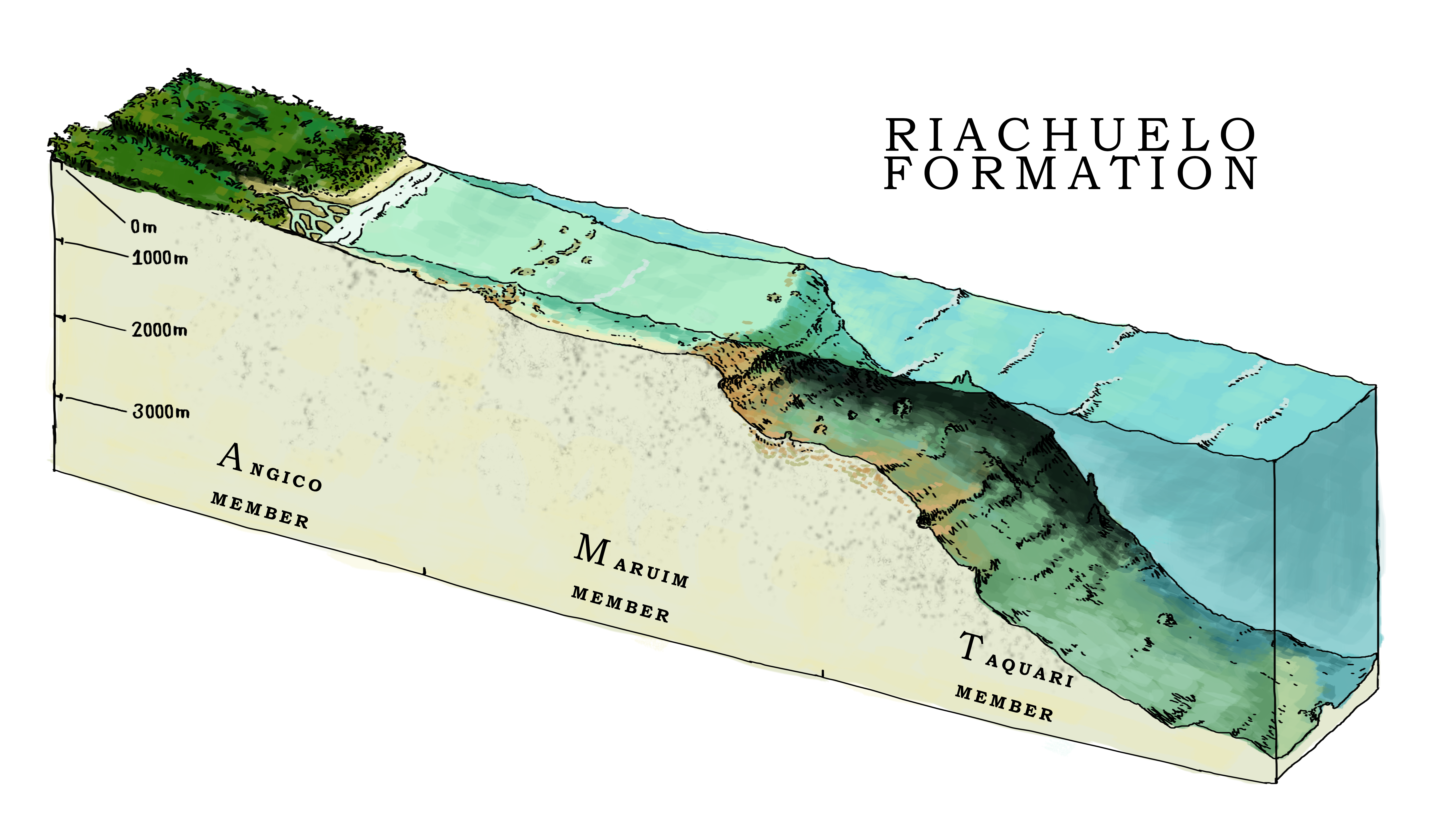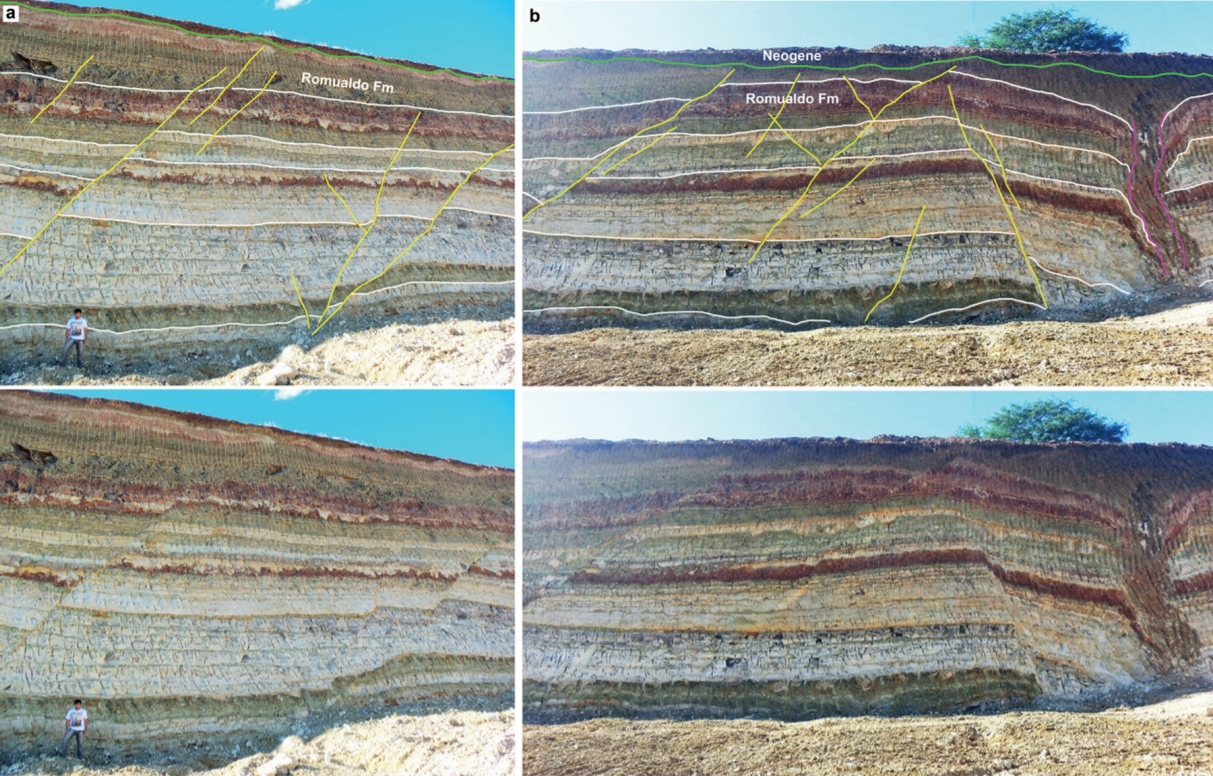|
Santanichthys
''Santanichthys diasii'' is a species of extinct fish that existed around 115 million years ago during the Albian age. ''S. diasii'' is regarded as the basal-most Characiformes, characiform, and is the earliest known member of Otophysi. It appears as a small fish, similar in appearance to a modern-day herring little more than 30 millimeters in length. Its most striking characteristic is the presence of a Weberian apparatus, which makes it the most primitive known member of the order Characiformes, the order in which modern-day tetras (including piranhas) are classified. ''Santanichthys'' has been unearthed from numerous locations throughout Brazil, in rocks dating to the Cretaceous Period. Its presence in these strata is seen as an indicator for the biogeography and evolution of its order. Anatomy and morphology ''Santanichthys'' is a small, characiform fish that would have superficially resembled more advanced tetras or the unrelated clupeiforms, herrings. Maximum length appears ... [...More Info...] [...Related Items...] OR: [Wikipedia] [Google] [Baidu] |
Riachuelo Formation
The Riachuelo Formation is a geologic formation of the Early to Late Cretaceous ( Late Aptian to Cenomanian) age in northeastern Brazil's Sergipe-Alagoas Basin. It is the first Formation of the Basin to contain sediments deposited under fully marine conditions. The formation is subdivided into three members: Angico, Taquari and Maruim. The formation has provided fossils of ammonites, gastropods, bivalves, brachiopods, serpulids, equinoderms, ostracoids, radiolarians, lobsters and Crabs. Several fish species reported from the Santana Formation also occur in this formation, namely: ''Cladocyclus gardneri'', ''Neoproscinetes penalvai'', ''Notelops brama'', ''Rhacolepis buccalis'', ''Tharrhias araripis'' and ''Vinctifer comptoni''. ''Santanichthys diasii'' is also reported from the Taquari Member of the Riachuelo Formation. Teeth and vertebrae of elasmobranchii have also been found in the formation. Description The Riachuelo Formation is a 500 metres (1,600 ft) thi ... [...More Info...] [...Related Items...] OR: [Wikipedia] [Google] [Baidu] |
Weberian Apparatus
The Weberian apparatus is an anatomical structure that connects the swim bladder to the auditory system in fishes belonging to the superorder Ostariophysi. When it is fully developed in adult fish, the elements of the apparatus are sometimes collectively referred to as the Weberian ossicles. The presence of the structure is one of the most important and phylogenetically significant distinguishing characteristics of the Ostariophysi. The structure itself consists of a set of minute bones that originate from the first few vertebrae to develop in an embryonic ostariophysan. These bones grow to physically connect the auditory system, specifically the inner ear, to the swim bladder. The structure acts as an amplifier of sound waves that would otherwise be only slightly perceivable by the inner ear structure alone. Structural anatomy and function The generalized structure of the Weberian apparatus is akin to a skeletal complex of bones and ossicles that are physically connected to the ... [...More Info...] [...Related Items...] OR: [Wikipedia] [Google] [Baidu] |
Characiform
Characiformes is an order of ray-finned fish, comprising the characins and their allies. Grouped in 18 recognized families, more than 2000 different species are described, including the well-known piranha and tetras.; Buckup P.A.: "Relationships of the Characidiinae and phylogeny of characiform fishes (Teleostei: Ostariophysi)", ''Phylogeny and Classification of Neotropical Fishes'', L.R. Malabarba, R.E. Reis, R.P. Vari, Z.M. Lucena, eds. (Porto Alegre: Edipucr) 1998:123-144. Taxonomy The Characiformes form part of a series called the Otophysi within the superorder Ostariophysi. The Otophysi contain three other orders, Cypriniformes, Siluriformes, and Gymnotiformes. The Characiformes form a group known as the Characiphysi with the Siluriformes and Gymnotiformes. The order Characiformes is the sister group to the orders Siluriformes and Gymnotiformes, though this has been debated in light of recent molecular evidence. Originally, the characins were all grouped within a single ... [...More Info...] [...Related Items...] OR: [Wikipedia] [Google] [Baidu] |
Early Cretaceous
The Early Cretaceous (geochronological name) or the Lower Cretaceous ( chronostratigraphic name), is the earlier or lower of the two major divisions of the Cretaceous. It is usually considered to stretch from 145 Ma to 100.5 Ma. Geology Proposals for the exact age of the Barremian-Aptian boundary ranged from 126 to 117 Ma until recently (as of 2019), but based on drillholes in Svalbard the defining early Aptian Oceanic Anoxic Event 1a (OAE1a) was carbon isotope dated to 123.1±0.3 Ma, limiting the possible range for the boundary to c. 122–121 Ma. There is a possible link between this anoxic event and a series of Early Cretaceous large igneous provinces (LIP). The Ontong Java- Manihiki- Hikurangi large igneous province, emplaced in the South Pacific at c. 120 Ma, is by far the largest LIP in Earth's history. The Ontong Java Plateau today covers an area of 1,860,000 km2. In the Indian Ocean another LIP began to form at c. 120 Ma, the Kergue ... [...More Info...] [...Related Items...] OR: [Wikipedia] [Google] [Baidu] |
Cycloid Scale
A fish scale is a small rigid plate that grows out of the skin of a fish. The skin of most jawed fishes is covered with these protective scales, which can also provide effective camouflage through the use of reflection and colouration, as well as possible hydrodynamic advantages. The term ''scale'' derives from the Old French , meaning a shell pod or husk. Scales vary enormously in size, shape, structure, and extent, ranging from strong and rigid armour plates in fishes such as shrimpfishes and boxfishes, to microscopic or absent in fishes such as eels and anglerfishes. The morphology of a scale can be used to identify the species of fish it came from. Scales originated within the jawless ostracoderms, ancestors to all jawed fishes today. Most bony fishes are covered with the cycloid scales of salmon and carp, or the ctenoid scales of perch, or the ganoid scales of sturgeons and gars. Cartilaginous fishes (sharks and rays) are covered with placoid scales. Some speci ... [...More Info...] [...Related Items...] OR: [Wikipedia] [Google] [Baidu] |
Romualdo Member
The Romualdo Formation is a geologic Konservat-Lagerstätte in northeastern Brazil's Araripe Basin where the states of Pernambuco, Piauí and Ceará come together. The geological formation, previously designated as the Romualdo Member of the Santana Formation, named after the village of Santana do Cariri, lies at the base of the Araripe Plateau. It was discovered by Johann Baptist von Spix in 1819. The strata were deposited during the Aptian stage of the Early Cretaceous in a lacustrine rift basin with shallow marine incursions of the proto-Atlantic. At that time, the South Atlantic was opening up in a long narrow shallow sea. The Romualdo Formation earns the designation of Lagerstätte due to an exceedingly well preserved and diverse fossil faunal assemblage. Some 25 species of fossil fishes are often found with stomach contents preserved, enabling paleontologists to study predator–prey relationships in this ecosystem. There are also fine examples of pterosaurs, reptiles and ... [...More Info...] [...Related Items...] OR: [Wikipedia] [Google] [Baidu] |
Aptian
The Aptian is an age in the geologic timescale or a stage in the stratigraphic column. It is a subdivision of the Early or Lower Cretaceous Epoch or Series and encompasses the time from 121.4 ± 1.0 Ma to 113.0 ± 1.0 Ma (million years ago), approximately. The Aptian succeeds the Barremian and precedes the Albian, all part of the Lower/Early Cretaceous. The Aptian partly overlaps the upper part of the Western European Urgonian Stage. The Selli Event, also known as OAE1a, was one of two oceanic anoxic events in the Cretaceous Period, which occurred around 120 Ma and lasted approximately 1 to 1.3 million years. The Aptian extinction was a minor extinction event hypothesized to have occurred around 116 to 117 Ma.Archangelsky, Sergio.The Ticó Flora (Patagonia) and the Aptian Extinction Event" ''Acta Paleobotanica'' 41(2), 2001, pp. 115-22. Stratigraphic definitions The Aptian was named after the small city of Apt in the Provence region of France, which is also known for ... [...More Info...] [...Related Items...] OR: [Wikipedia] [Google] [Baidu] |
Santana Formation
The Santana Group is a geologic group, formerly included as the middle part of the Araripe Group, in the Araripe Basin of northeastern Brazil. The group comprises the Crato, Ipubi and Romualdo Formations and is dated to the Aptian to Albian stages of the Early Cretaceous. The formations of the group were deposited in a lacustrine to subtidal shallow marine environment in the Araripe rift basin.Santana Group at .org The Santana Group has provided a rich assemblage of fossils; flora, fish, arthropods insects, turtles, snakes, dinosaurs, such as '' |
Araripe Basin
The Araripe Basin () is a rift basin covering about ,Neto et al., 2013, p.1 in Ceará, Piauí and Pernambuco states of northeastern Brazil. It is bounded by the Patos and Pernambuco lineaments, and is situated east of the Parnaíba Basin, southwest of the Rio do Peixe Basin and northwest of the Tucano and Jatobá Basins. The basin has provided a variety of unique fossils in the Crato and Santana Formations and includes the Araripe Geopark, a member of the UNESCO Global Geoparks since 2006. The pterosaurs '' Araripesaurus'' and '' Araripedactylus'' (now considered a ''nomen dubium''), crocodylian '' Araripesuchus'', the turtle '' Araripemys'', amphibian '' Arariphrynus'', the fish '' Araripelepidotes'' and the insect '' Araripenymphes'' were named after the basin. The bituminous shales of the Ipubi Formation in the Araripe Basin have potential for shale gas development.Neto et al., 2013, p.3 Basin history The tectono-sedimentary evolution of the Araripe Basin, located i ... [...More Info...] [...Related Items...] OR: [Wikipedia] [Google] [Baidu] |






